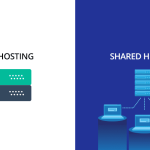In 2024, the content management system (CMS) landscape continues to be dominated by a mix of established giants and innovative newcomers. As businesses and individuals seek efficient ways to manage and publish content online, choosing the right CMS is more important than ever. This blog explores the most used CMS platforms in 2024, highlighting their strengths, weaknesses, and what makes them stand out in the crowded market.
1. WordPress
Market Share: ~42%
Best For: Blogs, e-commerce, business websites, portfolios.
Overview: WordPress remains the most popular CMS in 2024, powering over 40% of all websites globally. Originally a blogging platform, WordPress has evolved into a versatile CMS capable of handling everything from small blogs to large-scale e-commerce sites. Its vast ecosystem of plugins, themes, and community support makes it an attractive choice for users of all skill levels.
Pros:
- Extensive library of plugins and themes.
- User-friendly interface.
- Strong community support and regular updates.
- Flexibility to create virtually any type of website.
Cons:
- Can be slow without proper optimization.
- Security vulnerabilities due to its popularity.
Why It’s Popular: WordPress's flexibility, ease of use, and a massive ecosystem of plugins and themes continue to make it the go-to CMS for millions of users, from beginners to seasoned developers.
2. Joomla!
Market Share: ~3%
Best For: Complex websites, social networking sites, e-commerce.
Overview: Joomla! is a powerful CMS that strikes a balance between flexibility and ease of use. It is particularly well-suited for creating complex websites with advanced features, such as social networking sites or online communities. Joomla! offers a robust set of built-in tools and extensions that cater to a wide range of website needs.
Pros:
- Strong content management capabilities.
- Advanced user management.
- Multilingual support out-of-the-box.
- Flexible and customizable.
Cons:
- Steeper learning curve compared to WordPress.
- Smaller community and fewer extensions.
Why It’s Popular: Joomla! appeals to users who need more advanced features and flexibility without diving into full-scale development. Its powerful built-in features make it a favorite for more complex websites.
3. Shopify
Market Share: ~5%
Best For: E-commerce websites.
Overview: Shopify has solidified its position as the leading CMS for e-commerce in 2024. Designed specifically for online stores, Shopify offers a user-friendly interface and a range of tools to manage products, payments, and shipping. With its integrated payment processing and easy setup, Shopify is a top choice for businesses looking to sell online.
Pros:
- Easy to set up and use.
- Integrated payment processing.
- Excellent customer support.
- Wide range of e-commerce tools and apps.
Cons:
- Limited customization compared to open-source CMS.
- Monthly fees can add up.
Why It’s Popular: Shopify's focus on e-commerce, combined with its ease of use and powerful features, makes it the preferred choice for online retailers in 2024.
4. Drupal
Market Share: ~2%
Best For: Enterprise-level websites, complex and large-scale web applications.
Overview: Drupal is known for its robustness and scalability, making it the CMS of choice for large organizations and government websites. It offers a high level of customization, allowing developers to create complex websites tailored to specific needs. Drupal’s flexibility and powerful features come with a steeper learning curve, but for large-scale projects, it’s worth the investment.
Pros:
- Highly customizable and scalable.
- Strong security features.
- Excellent for complex and large-scale websites.
- Extensive API support for integrations.
Cons:
- Difficult to learn and manage for beginners.
- Requires significant technical expertise.
Why It’s Popular: Drupal is favored by organizations that require a high level of security, scalability, and customization. Its robustness makes it ideal for large and complex websites.
5. Wix
Market Share: ~6%
Best For: Small businesses, personal websites, portfolios.
Overview: Wix continues to be a popular choice for users seeking an easy-to-use, drag-and-drop website builder. While not as powerful as WordPress or Drupal, Wix is perfect for small businesses, personal websites, and users who need to get online quickly without coding knowledge. Wix offers a range of templates and customization options, making it accessible to non-technical users.
Pros:
- Intuitive drag-and-drop interface.
- No coding required.
- Wide range of templates.
- Built-in SEO and marketing tools.
Cons:
- Limited flexibility for advanced customization.
- Can be expensive as features are added.
Why It’s Popular: Wix’s simplicity and ease of use make it an attractive option for small businesses and individuals looking to create a professional-looking website without the need for technical expertise.
6. Squarespace
Market Share: ~3%
Best For: Creative professionals, artists, small businesses.
Overview: Squarespace is a visually-oriented CMS known for its beautiful, responsive templates. It’s a popular choice among creative professionals, artists, and small businesses who want to showcase their work in a visually appealing way. Squarespace offers a clean, minimalist interface and a range of features that make it easy to build and maintain a website.
Pros:
- Stunning, professionally designed templates.
- Integrated e-commerce capabilities.
- User-friendly interface.
- Reliable hosting and customer support.
Cons:
- Less flexible than open-source platforms.
- Limited customization options for advanced users.
Why It’s Popular: Squarespace’s focus on design and ease of use makes it a top choice for creatives and small businesses looking to build beautiful websites with minimal effort.
7. Magento (Adobe Commerce)
Market Share: ~1%
Best For: Large e-commerce websites.
Overview: Magento, now known as Adobe Commerce, remains a powerful CMS for large e-commerce operations. It offers extensive customization options and scalability, making it ideal for businesses with complex e-commerce needs. Magento is open-source, providing full control over the design, functionality, and user experience of an online store.
Pros:
- Highly customizable.
- Scalable for large e-commerce businesses.
- Advanced product management features.
- Strong community and support.
Cons:
- Requires significant technical expertise.
- Resource-intensive and can be costly to maintain.
Why It’s Popular: For large e-commerce businesses with complex needs, Magento offers unmatched flexibility and scalability, making it a top choice in the e-commerce space.
Conclusion
In 2024, the CMS landscape is as diverse as ever, with platforms catering to different needs, from personal blogs to large-scale e-commerce sites. WordPress continues to dominate the market due to its versatility and extensive ecosystem, while platforms like Shopify and Wix offer user-friendly solutions for specific needs. Whether you’re a small business owner, a developer, or an enterprise, there’s a CMS out there that fits your requirements. When choosing a CMS, consider your specific needs, technical expertise, and the type of website you want to create to ensure you select the right platform.







